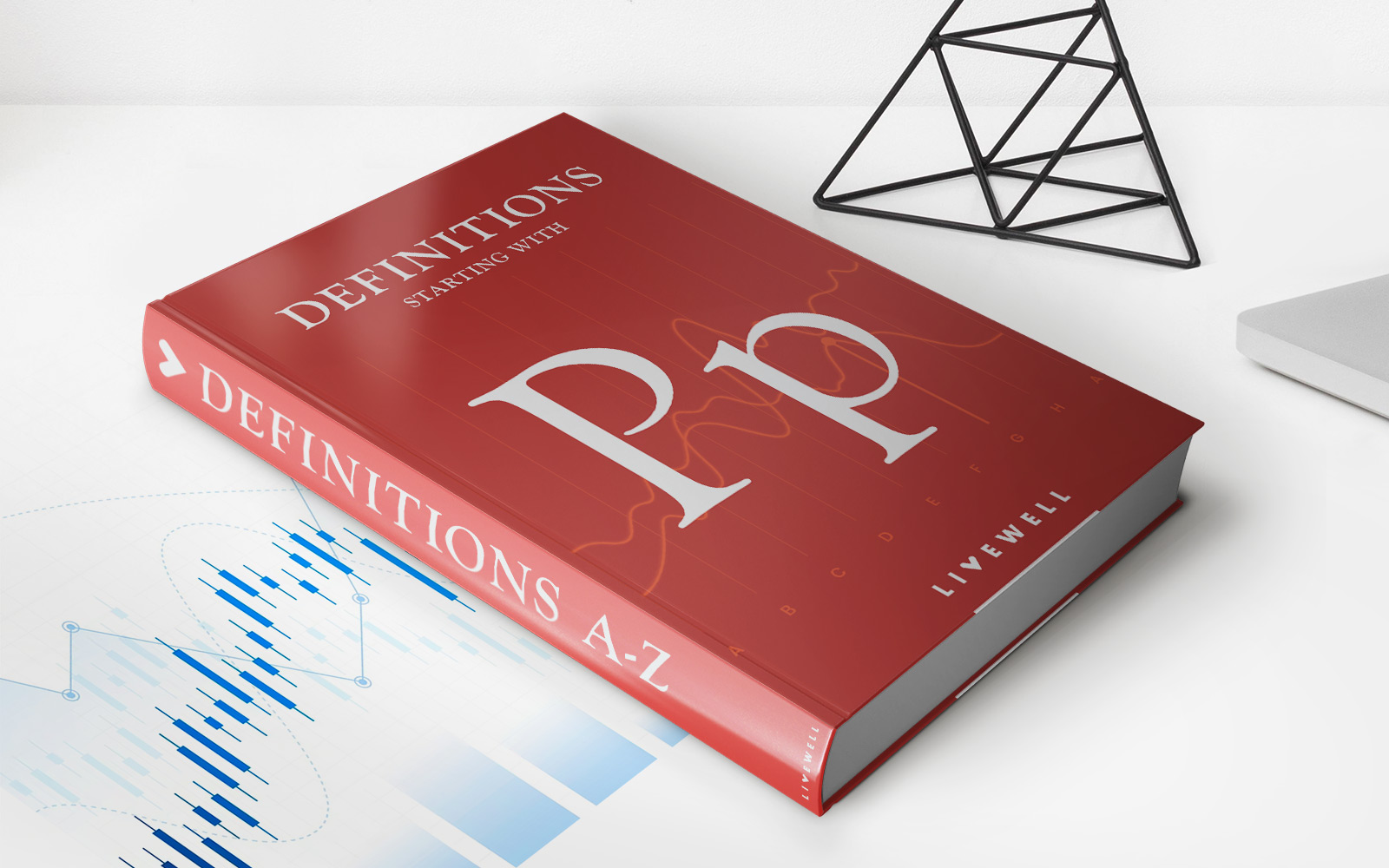Home>Finance>How Long Can My Child Stay On My Auto Insurance


Finance
How Long Can My Child Stay On My Auto Insurance
Published: October 5, 2023
Discover how long your child can stay on your auto insurance and save money. Get expert advice on managing your finances and ensuring your child's coverage.
(Many of the links in this article redirect to a specific reviewed product. Your purchase of these products through affiliate links helps to generate commission for LiveWell, at no extra cost. Learn more)
Table of Contents
Introduction
Welcome to the world of parenting where your child is growing up and becoming more independent by the day. As your child reaches driving age, you may be wondering how long they can stay on your auto insurance policy. This is a common concern for many parents, and understanding the rules and regulations surrounding insuring a young driver is crucial to ensure the safety and financial well-being of your family.
Auto insurance companies have specific guidelines and policies when it comes to covering young drivers. These guidelines are in place to protect both the insurance company and the young driver, as statistics show that young and inexperienced drivers are more likely to be involved in accidents. By understanding these guidelines, you can navigate the insurance landscape more effectively and make informed decisions for your family.
In this article, we will explore the age limitations, residency restrictions, driver’s license requirements, vehicle ownership criteria, coverage and cost considerations, and other insurance options available for young drivers. This comprehensive guide will provide you with the necessary information to make the best choice for your child’s insurance coverage.
Age Limitations
When it comes to insuring young drivers on your auto insurance policy, age limitations play a significant role. Each insurance company may have different age requirements, but generally, the age range for inclusion on a parent’s policy is between 16 and 24 years old.
At the age of 16, many teenagers obtain their driver’s license and start driving on their own. In most cases, they can be added to their parent’s auto insurance policy as a listed driver. This allows them to benefit from the existing coverage and potentially save money compared to purchasing a separate policy.
However, as young drivers grow older, they may reach a specific age limit where they are no longer eligible to be included on their parent’s policy. This is typically around the age of 25 or when they become financially independent. At this point, they are expected to secure their own auto insurance coverage.
It’s important to note that age limitations may vary among insurance companies and policies. Some insurers may allow young drivers to remain on their parents’ policy until they turn 26, while others may set the limit lower at 23. As a parent, it’s crucial to consult with your insurance provider to understand the specific age limitations that apply to your policy.
Additionally, age can also impact insurance rates. As young drivers mature and gain more driving experience, they may become eligible for lower insurance premiums. It’s advisable to regularly review your policy and discuss with your insurance provider to ensure you’re getting the most competitive rates based on your child’s age and driving record.
Residency Restrictions
When it comes to including a young driver on your auto insurance policy, residency restrictions can come into play. Insurance companies often require that the young driver resides with their parents or legal guardians to be covered under the policy.
Residency restrictions are put in place to ensure that the insurance coverage accurately reflects the risk associated with the insured vehicle. If a young driver moves out of their parents’ home and establishes a separate residence, they may need to obtain their own auto insurance policy.
However, there can be exceptions to these residency restrictions. For example, if a young driver goes to college or university and lives in a dormitory or student housing, they may still be eligible for coverage under their parents’ policy. This is typically considered a temporary absence from the parents’ home.
It’s important to note that each insurance company has its own specific guidelines regarding residency restrictions. Some may have stricter requirements and only allow coverage for young drivers who reside with their parents full-time, while others may be more lenient and consider temporary living arrangements.
It’s crucial to communicate any changes in residency to your insurance provider to ensure that your child’s coverage remains valid. Failure to do so may result in a denial of coverage if an accident were to occur while the young driver is living independently.
Remember, insurance companies need accurate information about where the insured vehicle is primarily garaged and where the listed drivers live. If there are any changes in residency, be sure to update your insurer promptly.
Driver’s License Requirements
When it comes to including a young driver on your auto insurance policy, their driver’s license status is a crucial factor to consider. Insurance companies typically require that the young driver holds a valid driver’s license to be covered under the policy.
For most young drivers, this means obtaining a learner’s permit or a provisional license before they can be listed on the insurance policy. Learner’s permits allow new drivers to practice driving under the supervision of a licensed adult before obtaining their full driver’s license. During this period, they may still be eligible for coverage under their parents’ policy.
Once the young driver obtains their full driver’s license, they are typically required to be added to the insurance policy as a listed driver. It’s important to promptly inform your insurance provider about the new license status to avoid any gaps in coverage.
Keep in mind that insurance companies may have specific requirements regarding the timeframe for adding a newly licensed driver to the policy. Failing to add them in a timely manner may result in your insurer denying a claim if an accident were to occur during this period.
It’s worth noting that the cost of insurance premiums for young drivers with a learner’s permit or a provisional license may be lower compared to those with a full driver’s license. As young drivers gain more experience and demonstrate responsible driving behavior, they may become eligible for lower insurance rates over time.
It’s important to emphasize the importance of safe driving practices and responsible behavior to young drivers. Encouraging them to maintain a clean driving record and participate in defensive driving courses can not only reduce the risk of accidents but also potentially lower insurance premiums.
Vehicle Ownership Criteria
When it comes to including a young driver on your auto insurance policy, the ownership of the vehicle they will be driving is an important factor to consider. Insurance companies often have specific criteria regarding the ownership of the vehicle in order to provide coverage for young drivers.
In most cases, the vehicle must be owned or co-owned by the parent or legal guardian in order for the young driver to be listed on the policy. This means that if the young driver has their own vehicle registered solely in their name, they may need to obtain their own separate auto insurance policy.
Insurance companies typically require this ownership criteria to ensure that they have accurate information about the insured vehicle and can properly assess the risk associated with it. Additionally, being the owner of the vehicle allows the parent or legal guardian to have control and authority over the vehicle’s usage and insurance coverage.
However, there can be exceptions to this ownership requirement. Some insurance companies may allow young drivers to be listed on their parents’ policy even if they do not own the vehicle. This is often the case when the young driver frequently uses a family-owned vehicle and is considered a regular driver of that vehicle.
It’s important to review your insurance policy and consult with your insurance provider to understand the specific requirements and options related to vehicle ownership for young drivers. That way, you can ensure that your child’s coverage is in compliance with the insurance company’s guidelines and effectively protects them while they are on the road.
Coverage and Cost Considerations
When it comes to insuring a young driver on your auto insurance policy, there are several coverage and cost considerations to keep in mind. Adding a young driver to your policy can have an impact on your overall coverage and premiums.
One important consideration is the type and level of coverage you have on your policy. You may need to review your current coverage and determine if it provides sufficient protection for both you and the young driver. Considerations such as liability coverage, collision coverage, and comprehensive coverage should be evaluated and adjusted accordingly.
Keep in mind that the addition of a young driver to the policy may increase the cost of your premiums. Insurance companies consider young drivers to be higher risk due to their inexperience and statistically higher likelihood of being involved in accidents. As a result, premiums may increase when a young driver is added to the policy.
However, there are steps you can take to mitigate the increase in premiums. Encouraging safe driving habits, completing defensive driving courses, and maintaining a clean driving record can help demonstrate responsibility and potentially lead to lower insurance rates over time.
It’s also a good idea to explore potential discounts that may be available for young drivers. Many insurance companies offer discounts for things like good grades, completion of driver’s education courses, and participation in safe driving programs. Taking advantage of these discounts can help offset the higher premiums associated with young drivers.
One important thing to note is that if a young driver will be driving their own vehicle, they may have different insurance needs and cost considerations compared to being added to a parent’s policy. In this case, it’s recommended that they obtain their own separate auto insurance policy to ensure they have the appropriate coverage for their specific circumstances.
Ultimately, it’s important to regularly review and reassess your auto insurance coverage to ensure it meets your family’s needs. As young drivers gain more experience and reach certain milestones, such as turning 25 or becoming financially independent, it may be necessary to revisit your policy and make any necessary adjustments.
Other Insurance Options for Young Drivers
In addition to being added to a parent’s auto insurance policy, there are other insurance options available for young drivers to consider. These options can provide coverage tailored specifically to their needs, and in some cases, may offer more competitive rates.
One option is for the young driver to obtain their own separate auto insurance policy. This is especially relevant if they own their own vehicle or if they no longer meet the criteria to be included on their parent’s policy, such as reaching a specific age limit or becoming financially independent.
Obtaining their own policy allows young drivers to have full control over their coverage and premiums. They can choose the type and level of coverage that suits their needs and budget. It also provides them with the opportunity to start building their own insurance history and potentially access discounts and benefits specific to their age group.
Another option for young drivers is to explore specialized insurance programs designed for new and young drivers. Some insurance companies offer programs that cater specifically to this demographic, providing targeted coverage and incentives to help them become safer and more responsible drivers.
These specialized programs often include telematics or usage-based insurance, where the insurance premium is based on the actual driving behavior of the young driver. This can be monitored through a device installed in the vehicle or through a mobile app that tracks driving habits such as speed, acceleration, and braking. By demonstrating responsible driving habits, young drivers may be eligible for discounted premiums.
Additionally, some insurance companies offer programs that reward good academic performance. Maintaining good grades in school can qualify young drivers for discounts on their auto insurance premiums, as it is seen as an indicator of responsibility and commitment.
When exploring other insurance options for young drivers, it’s important to shop around and compare quotes from multiple insurance providers. Each company may have its own unique offerings and pricing structure, so it’s beneficial to do some research and find the best fit for the young driver’s needs.
Remember, obtaining proper insurance coverage is essential for young drivers to protect themselves, their vehicles, and their financial well-being. Whether they are added to a parent’s policy or opt for their own insurance, it’s crucial to have the necessary coverage in place to navigate the roads with confidence.
Conclusion
Insuring a young driver on your auto insurance policy requires careful consideration of age limitations, residency restrictions, driver’s license requirements, vehicle ownership criteria, coverage and cost considerations, and other available insurance options. By understanding these factors, you can make informed decisions to ensure the safety and financial well-being of your family.
Age limitations determine the period for which young drivers can remain on their parents’ policy. Residency restrictions may come into play, requiring young drivers to reside with their parents or legal guardians to be covered under the policy. Driver’s license requirements stipulate that young drivers must hold a valid license before being included on the policy. Vehicle ownership criteria often require that the vehicle be owned or co-owned by the parent or legal guardian.
Considering coverage and cost is essential when insuring young drivers. It is necessary to review and adjust the policy’s coverage to protect both the young driver and their vehicle adequately. Keep in mind that adding a young driver to the policy may increase premiums due to their perceived higher risk. However, there are ways to mitigate this increase, such as encouraging safe driving habits and exploring potential discounts.
There are other insurance options available for young drivers, including obtaining their own separate policy or exploring specialized programs designed for new and young drivers. These options allow for more tailored coverage and potential cost savings based on driving behavior or academic performance.
In conclusion, insuring a young driver requires careful consideration of various factors. It’s important to review your policy, consult with your insurance provider, and explore all available options to ensure that both the young driver and your family are adequately protected on the road. By being proactive and informed, you can navigate the insurance landscape with confidence and peace of mind.














